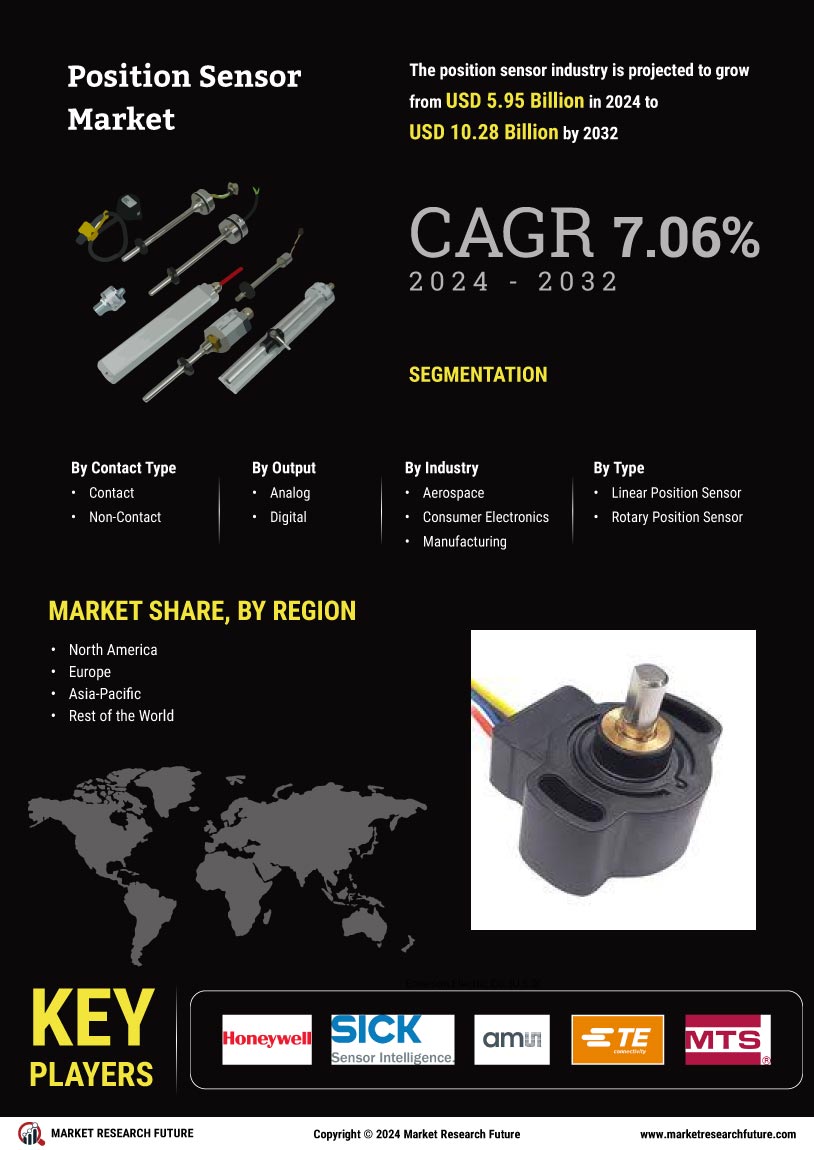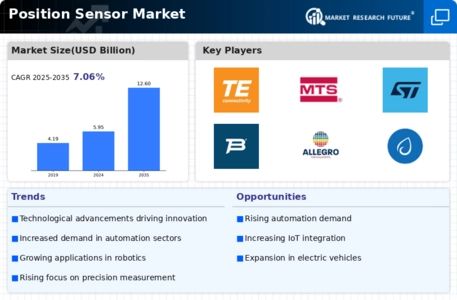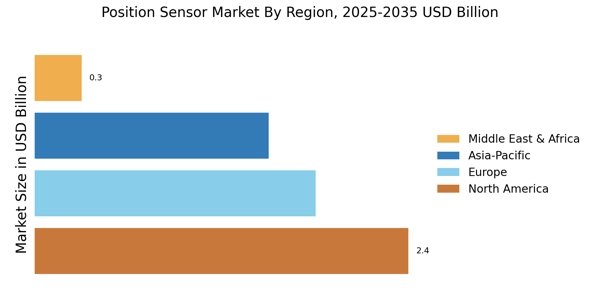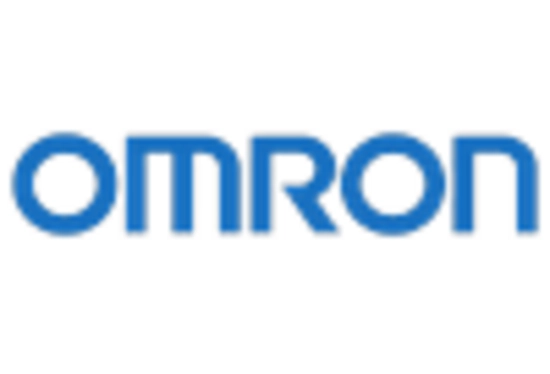Growth in Robotics and Automation
The Position Sensor Market is significantly influenced by the growth in robotics and automation. As industries increasingly automate their processes, the demand for precise position sensing solutions is on the rise. Position sensors are integral to robotic systems, enabling accurate movement and control. The robotics sector is anticipated to grow at a rapid pace, with estimates suggesting a market size exceeding 100 billion dollars by 2026. This growth is likely to drive the position sensor market, as manufacturers seek reliable and efficient sensors to enhance the performance of robotic applications. Consequently, the interplay between robotics and position sensing technology is expected to foster substantial market expansion.
Emphasis on Industrial Safety Standards
The Position Sensor Market is also being shaped by the increasing emphasis on industrial safety standards. As regulatory bodies enforce stricter safety protocols, industries are compelled to adopt advanced position sensing technologies to ensure compliance. Position sensors play a critical role in monitoring and controlling machinery, thereby enhancing workplace safety. The market is likely to see a rise in demand for sensors that meet these stringent safety requirements, particularly in sectors such as manufacturing and construction. This focus on safety not only drives the adoption of position sensors but also encourages manufacturers to innovate and improve their product offerings, contributing to the overall growth of the position sensor market.
Rising Demand for Precision Engineering
The Position Sensor Market is experiencing a notable surge in demand for precision engineering across various sectors. Industries such as automotive, aerospace, and manufacturing are increasingly adopting advanced position sensors to enhance accuracy in their operations. This trend is driven by the need for improved quality control and efficiency in production processes. According to recent data, the automotive sector alone is projected to account for a significant share of the position sensor market, with an expected growth rate of over 10% annually. As companies strive for higher precision in their products, the reliance on sophisticated position sensors is likely to intensify, thereby propelling the market forward.
Increasing Adoption of Electric Vehicles
The Position Sensor Market is witnessing a transformative shift due to the increasing adoption of electric vehicles (EVs). As the automotive industry transitions towards electrification, the demand for position sensors in EVs is expected to rise significantly. Position sensors are crucial for various applications in electric vehicles, including battery management systems and motor control. With The Position Sensor Market projected to reach over 30 million units by 2030, the position sensor market is likely to benefit from this trend. Manufacturers are focusing on developing specialized sensors that cater to the unique requirements of electric vehicles, thereby driving innovation and growth in the position sensor market.
Technological Advancements in Sensor Technology
Technological advancements are playing a pivotal role in shaping the Position Sensor Market. Innovations such as MEMS (Micro-Electro-Mechanical Systems) and optical sensors are revolutionizing the capabilities of position sensors. These technologies offer enhanced sensitivity, miniaturization, and integration with digital systems, which are essential for modern applications. The market is witnessing a shift towards smart sensors that can provide real-time data and connectivity, aligning with the growing trend of automation. As industries adopt these advanced technologies, the position sensor market is expected to expand, with a projected compound annual growth rate (CAGR) of around 8% over the next five years.

















Leave a Comment